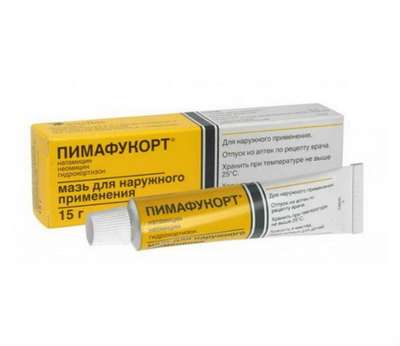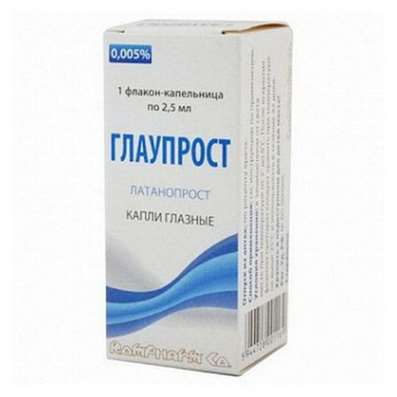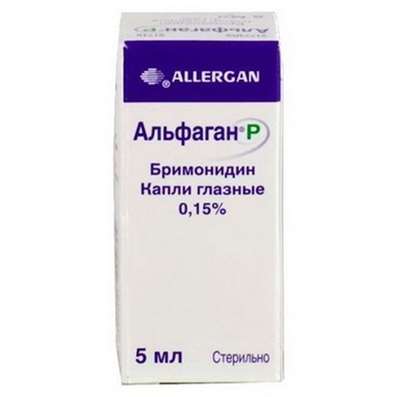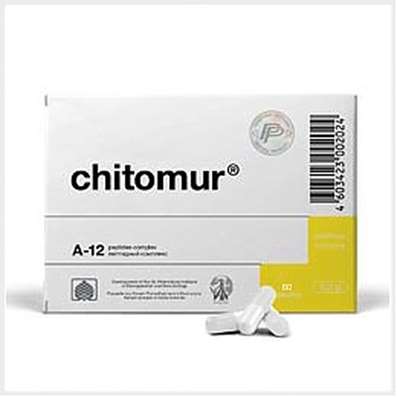Oxiracetam
27 Dec 2016
Pharmacological group: nootropics
Systematic (IUPAC) name: (RS) -2 - (4-hydroxy-2-oxo-pyrrolidin-1-yl) acetamide
Legal status: not regulated (US)
Application: oral
Half-life: 8:00
Formula: C6H10N2O3
Mol. weight: 158155
Oxiracetam (ISF 2522) is a stimulant and nootropic drugs from family Raņetamic drugs. Several animal studies have shown that the material is safe even when taken in high doses for long periods of time. However, the mechanism of action of drugs Racetam is still the subject of research. Oxiracetam not approved by the US FDA for use in medical applications. Oxiracetam - this is one of the first three Racetam compounds produced after Piracetam and aniracetam. Apparently, Oxiracetam release excitatory neurotransmitters, and may promote the formation of memory, but in order to validate it with precision lacks human studies. Summary oxiracetam is one of racetam that is structurally different from piracetam one hydroxyl group. It is also used as a nootropic agent, to improve the learning of the students or prevent cognitive impairment. Like other racetam, oxiracetam is a synthetic molecule that is not contained in food or in nature. When considering Oxiracetam research at this point in time, it seems that there is a sufficient fraction of evidence that oxiracetam helps reduce the amount of organic cognitive impairment (natural loss of knowledge during the aging process, which is not associated with any disease) and the decrease in dementia, but the study people with Alzheimer's disease showed no visible improvements in the application of Oxiracetam additives. When receiving Oxiracetam with cognitive impairment, its potential is comparable to Alpha GPC (Glitserofosfoholin) and Oxiracetam seems more potential than Piracetam. There is currently no evidence to support the improvement of memory when receiving Oxiracetam young people without cognitive impairment who wish to improve memory. If we consider the animal studies, oxiracetam seems very reliable means to prevent amnesia induced by various anti-cholinergic or anti-modified compounds (injection of 3-30 mg / kg in rats are well normalize memory formation). Oxiracetam caused improvement in the formation of memory in general healthy and young rats / mice without apparent cognitive impairment (assuming that it can be used as a nootropic drug), but it occurs only after continuous use for five days. Oxiracetam is a positive modulator of AMPA, similar to the mechanism and potential (but binding site) on piracetam and aniracetam, but may have an additional advantage in increasing the levels of released glutamate, acetylcholine and D-aspartic acid, most active and not calm neurons. This two-part sequence (increase and modulate glutamate receptors, through which its signals), ultimately enhances the metabolic activity in neuronal cells and improves memory formation. Also known as 4-hydroxy-2-oxo-rirrolidinoatsetamid, ISF-2522 Not to be confused with aniracetam and piracetam.
Oxiracetam shows psychostimulant effects!
Oxiracetam is a form of:
- Nootropics
- Racetam
Oxiracetam: instructions for use
Oxiracetam is usually used in the range of 1,200-2,400 mg doses, over the course of the day, in two or three divided doses (e.g., three doses of 400 or 800 mg). There are no studies on whether Oxiracetam effectiveness depends on its use with food or not, but it should be taken about an hour before mental activity.
Sources and structure of Oxiracetam
Sources
Oxiracetam (full name 4-hydroxy-2-oxo-pirrolidinoatsetamid and classification ISF-2522 [1]) is a synthetic molecule pyrrolidine racetam class which has no known food sources. Oxiracetam Chemically synthesized from the parent compound Racetamic Piracetam (2-oxo-l-pirrolidionoatsetamid) where the difference is the addition of a hydroxyl group at the 4-uglerod.1) Being molecule racetam, oxiracetam usually used as a nootropic compound. GABA is oxiracetam analogue which supports phospholipid metabolism, modulate AMPA receptors, interacts with the release of neurotransmitters and is more effective in improving learning processes than Piratsetam.2) oxiracetam - a chemically synthesized compound nootropic racetam class based on the structure of piracetam, but with the best potential .
Structure
With respect to piracetam, the only structural change Oxiracetam - a presence of the hydroxyl group at the 4-position on the pyrrolidinone carbon skeleton. This is a very highly polar molekula.3) oxiracetam structurally very similar to piracetam, differing only with a hydroxyl group at the 4-carbon.
Pharmacology
Serum
A single dose of 800mg Oxiracetam can promote blood Cmax 21.6 ug / ml for approximately one hour after injection (Other studies have shown that after 150min, concentration was 8,658 mg / ml), and the total AUC 28mkg +/- 110 / h / ml. Despite the rapid decrease, the approximation to the original values observed for 24 hours. Preliminary studies have shown that oxiracetam still observed in the plasma (136 ng / ml) 96 hours after oral administration of one capsule 800mg.4) Apparently, oxiracetam absorbed after oral administration and reaches a peak after an hour after administration, followed by a rapid reduction in serum concentration.
Neurology
Memory and Learning
Mechanically, Oxiracetam may increase long-term potentiation (LTP) in isolated hippocampal slices at a concentration of 1 micron, similarly Aniracetam. This increase in the efficiency of the signal in the hippocampal cells may be linked to an increased release of glutamate and D-aspartic acid from cells in the hippocampus activation in 0.01-5mkm concentration (no effect on the outflow of glutamate or D-the AA, when neurons are not activated), and an increase in signaling glyutaminergic through AMPA-receptor positive modulator which is oxiracetam. AMPA-receptors mediate the latest release of LTP. Although there is less efficient range 0.1-1 microns Oxiracetam also enhance the release of acetylcholine from hippocampal slices activated neuronal cells without altering basal release and in vivo experiments suggest that free oxiracetam not alter the concentration of acetylcholine in the brain. Ultimately, it was noted that the protein kinases C (PKC; intracellular mediator in memory formation) were stimulated in hippocampal cells when receiving oxiracetam in vitro (200-600nM) and in vivo (47% increase with injections of 100 mg / kg), which was considered mediated enhancement of glutamate release (since the activation of AMPA and NMDA receptors can cause calcium influx into neurons and subsequently their activation oxiracetam and does not directly affect the calcium channels). The potential of 100mg / kg oxiracetam comparable to 600 mg / kg orally consume Alpha-GPC (or 50-200 nM in vitro) and only in the hippocampal it was comparable to 30 mg / kg orally received aniracetam (200nM). Oxiracetam Effect on PKC (at least for the membrane binding) was directly related to its effect on memory improvement. Oxiracetam can increase the long-term potentiation in the hippocampus, contributing to the formation of memory. This is probably due to increased release of excitatory neurotransmitters from neurons and activated signaling through their increased AMPA-receptors, then, ultimately, leads to increased activation of PKC. Studies in which used healthy rodents receiving oxiracetam for memory formation, note that the dose of 100 mg / kg may not improve performance in the maze, but associated with an improvement in remembering and maintaining information in older rats (storing information in young rats which give 3-30mg / kg oxiracetam when the Morris water maze, there was no test. Hold on a raised cascade labyrinth allows you to see an improvement when taking 3-30 mg / kg oxiracetam in otherwise healthy mice, despite the lack of inherent self-preservation effect (improvement in naive, but poorly trained mice). This trend is observed in other studies that used intermittent reception oxiracetam in trained rats, with no improvement at doses of 100 mg / kg. The surveys used oxiracetam during a training period in naive rats, note that small doses such as 25mg / kg, can be effective in improving learning. Several other studies using oxiracetam for one day, did not point out the benefit oxiracetam treatment, while the long-term use causes memory improvement observed even 4 months after the discontinuation of additives and improvements appear when they do not occur within 16 hours after training, but instead manifest after. Errors in the assay of the lever 12 of the radial maze have been reduced oxiracetam at a dose of 100 mg / kg, but not at lower doses (25-50mg / kg) in rats, while the entire training process improved at 25mg / kg and a dose of 100 mg / kg ;) this is different from previous studies using less sensitive 8-arm radial maze test in which the benefits were only observed at a dose of 100mg / kg. In studies using tests for avoidance, avoidance is enhanced by the acquisition of a 5-day application of 25-50mg / kg oxiracetam (in comparison with a lot of piracetam, 100mg / kg). Studies have found that single doses have no effect on the acquisition of avoidance. The above-mentioned study on the increase in the preservation of information when receiving oxiracetam also noted the ineffectiveness of 100mg / kg piracetam. Other studies show that piracetam has the least effective in improving learning outcomes (compared oxiracetam, aniracetam and piracetam). Observed improvement in memory formation while taking oxiracetam, but studies in rodents suggest that they are not reliable enough.
In animal models, oxiracetam protects against scopolamine-induced amnesia and amnesia induced NMDA- antagonist, including MK-801, AP-7 and AP-5 as well as in vitro is inhibited by glutamate (NMDA) antagonism kynurenic acid. These anti-amnesic effects occur at doses of 3-30mg / kg (intraperitoneal infection) and avoid large doses amnesia (no significant differences between the toxin and with oxiracetam control). The effects of anti-amnesic and appear naïve and well-trained mice. Protection against scopolamine amnesia seen in humans when taking 800-2,400 mg Oxiracetam hour before administration of scopolamine. While animal studies using scopolamine assume almost complete protection studies in humans can not show a degree of protection and as long as all the tested doses were effective, with no relationship was found between doses. Although the prevention of amnesia, oxiracetam is not a stimulant antagonist scopolamine effects. Protective effects similar to aniracetam oxiracetam effects. Oxiracetam shows almost absolute protection against scopolamine, this requires even more smaller doses, as studies in rats using 3-30mg / kg Oxiracetam as abdominal injection. It is assumed that oxiracetam exhibits potent anti-cholinergic effects vs. amnesia antagonists to a much greater extent than aniracetam. A pilot study of multi-infarct dementia, involving 12 people with cognitive impairment who were given 400 mg oxiracetam daily for four weeks (up to 1,200mg daily), said heterogeneous improvements in dose-dependent manner, with the improvement of mental function, not cognitive. Later studies on similar patients reported greater improvement in verbal performance. Other studies have noted that in 60 older people with organic cognitive impairment who were given 400 mg oxiracetam with a gradual increase to 2,400mg over the next six weeks, there has been a decrease in cognitive impairment, while oxiracetam is more effective than piracetam in improving memory (and less effective in reducing the excitation). Studies in 272 patients with dementia have noted improvement of cognitive impairment in all three rating scales (IPSC-E, Dementia Rating Scale and the NMIC), while one out of 58 people had been confirmed by an improvement of memory and verbal skills. In contrast to the above studies, a study in humans with Alzheimer's disease found no improvements associated with the reception oxiracetam. The standard recommended doses, to reduce symptoms of cognitive impairment, oxiracetam is effective in the elderly, with a particular impact on the improvement in verbal learning. There is a small amount of evidence of this, and 1,200-2,400 mg dose to show temporary improvement. Improvements in Alzheimer's disease when taking oxiracetam not observed, the effect of the drug on Parkinson's disease is not known. Please pay attention to Piracetam.
Glutamine-ergic neurotransmission
Oxiracetam shows the activity increase in signaling through AMPA glutamate receptors as a positive modulator in a dose of 1-100 microns (no clear dose dependence) with KD 214 +/- 35nM, which is typical for aniracetam (176 +/- 7nM), and for piracetam (KD 190 +/- 51nM). Oxiracetam aniracetam not displace binding of AMPA receptors, and when in the course of further studies, it was found that these molecules increase the low affinity component Bmax AMPA receptor signaling, but not the high affinity component and the increase in Bmax is comparable to the other two said racetam. AMPAkinom oxiracetam is similar to Aniracetam and piracetam, which may increase signaling through these receptors. Regarding the mechanism of this action, all of the molecules are represented equally effective. It is believed that the increased efficiency of the signal in hippocampal cells is associated with an increased release of glutamate and D-aspartic acid from hippocampal cells at concentrations 0.01-5mkM activation without affecting the outflow glutamate or D-AA, when these neurons have not been activated, while the dose of 100 microns It causes a slight increase. Oxiracetam may increase neuronal release of glutamate and D-aspartic acid (glutamate receptor agonist) after neural activation, without affecting the spontaneous release per se. As mentioned in the section of memory oxiracetam injection at a dose of 3-30 mg / kg in mice to prevent amnesia induced glutamine-ergic antagonists MK-801, AP-7 and AP-5. In vitro, inhibition of noradrenaline release caused NDMA antagonists prevented when receiving a oxiracetam 1mkM dose (with potential close to that of aniracetam). Oxiracetam prevents the effects of amnesia glutaminergic antagonists.
Olin-ergic neurotransmission
It was noted that oxiracetam prevents the decrease in the concentration of acetylcholine induced by electroshock therapy in rats, which was accompanied by prevention of amnesia. Since physostigmine (acetylcholinesterase inhibitor as Huperzine-A) prevents amnesia, due to conservation of acetylcholine concentrations, it is assumed that the anti-amneziynye properties oksiratsetama against cholinergic antagonists such as scopolamine, relate to the maintenance of acetylcholine concentration that marked against scopolamine-induced amnesia, and in a dose of 50-100mg / kg (partial preservation of the cerebral cortex and hippocampus, but not in the striatum). It was noted that slightly more Aniracetam exhibit protective properties in the hypothalamus, but inactive in the cerebral cortex. As mentioned above, this can not explain the effects antiamnesic oxiracetam as the depletion of catecholamines (despite the persistence of acetylcholine) cancels the protective effects against scopolamine oxiracetam. Reducing the concentration of acetylcholine at the cholinergic antagonists and reception amnesic stressors may be prevented application oxiracetam which exhibits antiamnesic properties. In rats that were not given anticholinergics or oxiracetam or aniracetam (100mg / kg) did not change the concentration of acetylcholine and choline in any of the tested portion of the brain. Regardless of increasing concentrations of acetylcholine, increase utilization oxiracetam shows acetylcholine in cerebral cortex and gippotalamuse when injected at a dose of 100-300mg / kg. It was noted that subsequent doses oxiracetam increase acetylcholine recycling 31% of control and are more effective than piracetam. Moreover, in spite of the obvious changes in the basal levels of acetylcholine in vivo, it appears that oxiracetam at a concentration of 0.1-1 uM in hippocampal slices increases the release of acetylcholine. Basal outflow acetylcholine from these neurons are not activated if they had not been altered. It is believed that the extended release explains the increase in the uptake of acetylcholine, marked initially with oxiracetam that causes the relative depletion of intracellular levels of acetylcholine, choline uptake when blocked (which may be explained by an increased release). Despite the lack of effect on acetylcholine concentration in the brain at rest, it seems to increase the efficiency oxiracetam acetylcholine signaling and acetylcholine release from activated neurons.
Attention and arousal
Apparently, oxiracetam exhibits psychostimulant properties are manifested in the form of sleep disorders. It is believed that they are associated with holenergic properties as holenergic system of the brain stem / basal telencefolon contribute to excitation. It is believed that this effect is partially explains the exciting oxiracetam impact on memory improvement. Studies that measure the locomotion (amphetamine and caffeine test) did not show a response to oxiracetam and sometimes displayed a slight increase in locomotion in 100mg / kg dosage, suggesting that psychostimulant properties oxiracetam less than that of other preparations. Apparently it has some unexpressed oxiracetam psychostimulant properties.
Hypnotics and sedatives properties
The stimulatory effects of oxiracetam not affect the readings of the EEG during sleep (it is believed that they reflect the quality of sleep) and evidently, it prolongs the delay sleep (time required to fall asleep), depending on the dose achieved (extension of 30% at 50mg / kg and 37.9% at 100 mg / kg). Apparently, the drug does not degrade the quality of sleep, but increases the time required to fall asleep because of its psychoactive properties.
Catecholamines
Incubation 0.01-1 .mu.M oxiracetam in hippocampal slices does not alter the release of noradrenaline neurons when activated. Piracetam also has no effect on these three neurotransmitter and absence effect norepinephrine replicated even at 10 .mu.M. Inhibition of the release of norepinephrine from NMDA canceled oxiracetam (1 uM), which is associated with the ability to reduce the effects oxiracetam antagonism of glutamate. Despite this, oxiracetam not increase noradrenaline release induced by NMDA.
Dopaminergic neurotransmission
Oxiracetam, apparently does not affect the release of dopamine neurons activated at standard concentrations but 0.1-1mkM dopamine (catecholamines and others) appears to affect the anti-amnesic oxiracetam effects, since its protective action against anti-cholinergic drug scopolamine It does not occur at low levels of dopamine and norepinephrine. Dopamine antagonist haloperidol can cause amnesia (especially swinging aversive learning, which is considered to be modulated with the help of dopamine). This property can be prevented in the preliminary receiving 50mg / kg oxiracetam. Reduction in locomotor activity, which is usually seen when taking dopaminergic antagonists, does not prevent oxiracetam. Anti-amnezic oxiracetam properties, apparently, can prevent amnesia associated with dopamine antagonists.
GABAergic neurotransmission
Oxiracetam (0.01-1mkM) in hippocampal slices does not alter the release of GABA, when neurons were activated or is at rest. Diazepam (benzodiazepine) induces neuronal cell death that is attenuated oxiracetam at doses between 50-100 mg / kg (1500mg / kg reduces damage). Apparently insignificant changes oxiracetam kinetics GABA. Interestingly, despite the fact that exhibits anti-oxiracetam amnesic properties against dopaminergic, glutaminerge cholinergic antagonists and it does not prevent amnesia induced by diazepam (amnesia caused benzodiazepine) at 3-30mg / kg. This is different from the effects of piracetam, and due to the fact that there is currently no explanation for this, its property to protect against amnesia requires further research. Oxiracetam can prevent amnesia induced by benzodiazepines, but there are currently not enough research to confirm this property.
Serotonergic neurotransmission
Oxiracetam does not change the release of serotonin-activated neurons in 0.01-1mkM concentration. Violation of serotonergic signaling also does not affect the anti-amnesic oxiracetam effects against scopolamine. Oxiracetam shows no detectable effect on serotonin.
Neuroprotection
Organotin trimetiltin neurotoxin that impairs memory formation for a period of up to four years, causing excessive death of neurons in the hippocampus (and other regions of the brain with fewer). Its toxicity has been reduced in the preliminary reception 3-30mg / kg oxiracetam within seven days.
bioenergetics
At least one study has noted that oxiracetam, astrocidam is incubated with the period two weeks, increasing the concentration of ATP in cells.
Nutrient interaction
Amphetamines
Combined use of amphetamine oxiracetam not connected mice reacting against locomotion (increasing when receiving amphetamine per se, but not oxiracetam, wherein the combination does not exceed indication when receiving amphetamine in isolation), but appeared additive (or synergistic) against skill acquisition avoidance (training). This synergy was also observed when taking amphetamine with piracetam was duplicated in another study. Apparently, it oxiracetam well with amphetamine compounds, improving cognitive abilities and without affecting locomotion.
Nicotine
Nicotine is a cholinergic agonist. Oxiracetam (50mg / kg) in combination with nicotine (0.25-1mg / kg) increases the nicotine-induced improvement in passive avoidance in mice by about 34-74% without a significant change in locomotion.
Physostigmine
Physostigmine is an acetylcholinesterase inhibitor which can improve memory formation alone, but in combination with oxiracetam not display any visible advantage additive in mice. Acetylcholinesterase inhibitors is not surprising synergistic with oxiracetam, despite the increase in the concentration of acetylcholine.
Clinical researches
There have been attempts to use oxiracetam research as a means to mitigate the symptoms of dementia. However, conclusive results of studies in which patients suffering from Alzheimer's dementia or organic substance abuse, drug taken orally 800 mg twice a day, it has been received. Proven limited beneficial effects of the drug effects that demonstrate the better results in the tests for logical thinking, attention, concentration, memory and spatial orientation. These tests were performed on patients with mild to moderate dementia and ADHD, and 800-2400 mg doses were administered orally twice a day for one to six months. Improvement was also observed in patients with exogenous commotion syndrome, organic brain syndromes, and other types of dementia. According to V. Gallai et al., Oxiracetam is more effective in comparison with piracetam. Studies have shown that the hippocampus-mediated oxiracetam improves training performance by increasing the membrane-bound protein kinase C (PKC). When compared with the control group of mice with mouse-Diamond anemia Blekfana which give oxiracetam, showed a significant increase in spatial Morris performance tests. This increase in performance was correlated with an increase in membrane-bound PKC.
Pharmacokinetics
According to one source, oxiracetam well absorbed from the gastrointestinal tract bioavailability of 68-82% (Perucca E. et al.) Or 56% (according to another source). The peak serum levels are achieved within 1-3 hours after a single dose of 800 mg or 2000 mg, the maximum concentration in the serum is 19-31 mg / ml at these doses. Oxiracetam mainly cleared by the kidneys and 84% of the drug is excreted unchanged in the urine. The half-life Oxiracetam in healthy individuals is around 8 hours and from 10 to 68 hours in patients with renal insufficiency. The drug can penetrate the blood-brain barrier with brain concentrations in the brain that reach 5.3% of the concentration in the blood (measured after one hour after receiving a single intravenous dose of 2000 mg). release range is 9 to 95 ml / min and steady concentration achieved at 800 mg twice a day, ranging from 60 uM to 530 uM. Highest Oxiracetam concentration contained in a transparent partition, less high - in the hippocampus, cerebral cortex, and the lowest - in the striatum after 200 mg / kg oral dose in rats.
Safety and Toxicology
Overall
When considering human studies, oral supplements in Oxiracetam to 1,600mg daily dose in people with impaired memory do not exhibit any side effects compared to placebo.
Pregnancy
One study in which pregnant mice were given a dose of oxiracetam 50 mg / kg did not show any teratogenic effect, on the contrary, have been recorded in improving radial maze test (selection accuracy) and look at the behavior compared to the control mouse.

 Cart
Cart





